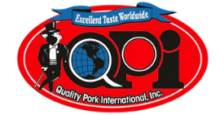Quality Assurance Program for Slaughterhouse Operations
Introduction
This Quality Assurance (QA) program is designed to ensure that our slaughterhouse operations for chicken, pork, and beef meet the highest standards of food safety, animal welfare, and product quality. Our commitment to these principles not only aligns with regulatory requirements but also fosters consumer trust and satisfaction.
Objectives
- Ensure compliance with all local, state, and federal regulations.
- Maintain high standards of hygiene and sanitation throughout all processes.
- Implement effective animal welfare practices during handling and processing.
- Monitor product quality at every stage from receiving livestock to final packaging.
Key Components
1. Compliance with Regulations
- Licensing: Ensure that the facility holds necessary permits as required by health authorities.
- Inspections: Conduct regular internal audits in addition to government inspections.
2. Animal Welfare Standards
- Handling Practices: Train staff on humane handling techniques according to established guidelines (e.g., USDA or equivalent).
- Transport Protocols: Ensure animals are transported under conditions that minimize stress.
3. Staff Training
- Conduct ongoing training programs covering:
- Food safety protocols (HACCP principles)
- Personal hygiene standards
- Emergency response procedures
4. Sanitation Procedures
- Develop a comprehensive cleaning schedule for equipment, tools, and facilities:
- Daily cleaning of work areas after each shift
- Regular deep cleaning of processing equipment
- Use of approved sanitizers effective against pathogens
5. Processing Standards
Chicken Slaughtering Process:
- Verify pre-slaughter checks including health inspection certificates.
- Implement stunning methods compliant with humane slaughter practices before bleeding out.
Pork Slaughtering Process:
- Utilize controlled atmosphere stunning methods where applicable.
- Monitor carcass inspection continuously post-processing for signs of disease or contamination.
Beef Slaughtering Process:
- Adhere to specific grading criteria set forth by relevant agricultural departments.
- Assess meat temperature control immediately after slaughtering until chilling is achieved.
6. Hazard Analysis Critical Control Points (HACCP)
Develop a HACCP plan that includes critical control points such as:
- Temperature monitoring during storage
- Pathogen testing on surfaces and products
- Monitoring water quality used within processing areas
7. Product Traceability
Implement systems for tracking products through each stage of production:
- Record keeping from receipt of livestock to distribution channels
- Batch numbers assigned enabling trace-back in case of food safety issues
8. Testing & Monitoring Programs
Regularly test samples from various stages (raw materials, finished products):
- Microbiological testing for pathogens such as Salmonella or E.coli
- Chemical residue tests ensuring compliance with maximum allowable limits
Documentation & Reporting
Maintain thorough documentation encompassing all QA activities including training records, audit results, incident reports, corrective actions taken based on findings:
- Standard Operating Procedures (SOPs)
- Inspection checklists
- Incident logs related to non-compliance
Continuous Improvement
Conduct periodic reviews of the QA program effectiveness; gather feedback from employees involved in daily operations aiming toward constant enhancement in procedures applied across all aspects within the plant environment.
By adhering closely to this Quality Assurance Program framework tailored specifically towards chicken, pork, and beef processing practices at our slaughterhouse facility we strive not just towards meeting obligations but exceeding expectations while safeguarding public health interests along every step taken alongside responsible industry stewardship principles upheld diligently!
